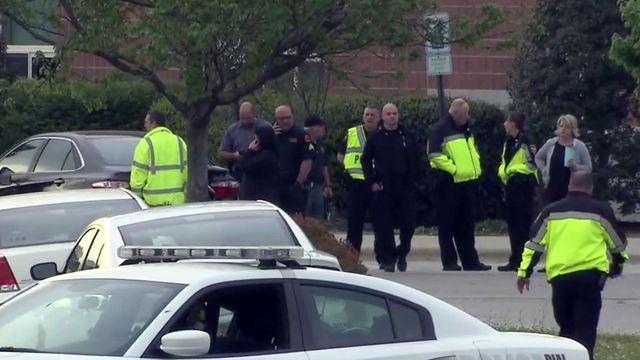Bomb threats cost schools, authorities time, money
A Monday morning bomb threat at Holly Springs High School turned out to be a hoax, but it delayed buses for three schools, cost teachers part of their class time and cost the school district and law enforcement time and money checking it out.
Posted — UpdatedHolly Springs Police Chief John Herring said his department devoted as much as $3,500 in manpower and equipment to respond to Holly Springs High, and the department wasn't the only one that searched the school for possible explosives.
Wake County Sheriff Donnie Harrison said his deputies are spending an increasing amount of time chasing threats of bombs or guns at area schools.
"I don't know how many we've had [this year]. We've had a ton," Harrison said.
Russ Smith, senior director of security for the Wake County Public School System, said there were only four bomb threats in the district in 2016-17. Although he doesn't have statistics for this school year, he knows the numbers have jumped.
"There have been a numerous increase in the number of bomb threats, the the number of hoax bomb threats that are coming from overseas and other locations, I guess all geared to causing chaos," Smith said.
WRAL News has covered at least seven threats phoned in to Wake County schools or posted on social media in the last five months, three of which occurred in the last two weeks.
Even when a threat proves unfounded, the cost is significant to secure a school and chase down the source of the threat.
"We are going to call in probably some more deputies. We are going to call in some investigators. We are going to get the school system involved. We are probably end up going to a home or two or three," Harrison said.
"We use a lot of manpower because, if we didn't look into every facet and something was to happen, I would feel responsible," he added. "I would be afraid to try to figure the cost."
Still, a recent case shows the benefit of expending the effort.
"[We] found out the student that made the threat had the capability of putting their hands on some firearms," the sheriff said, declining to name the school or the student involved.
The costs also extend to the classroom.
- Administrators were called in a half hour early on March 1.
- Teachers were reassigned before school to ensure all outside doors were covered.
- Argent canceled a meeting with a teacher and called district officials to let them know he was aware of the situation.
- The front office was inundated with calls and emails from concerned parents.
- Counselors were told to focus on dealing with concerned students.
- Argent freed up time after school to meet with the student accused of making the threat and his parents.
Harrison said the best way to reduce threats to schools is to get tough on the people making them.
"I am pushing, and a lot of us are pushing. If the principals, teachers, whoever, [when] they hear something, call us," he said. "Let's try to deter it. Once we start doing it and we add some punishment to it, then you will see some of this stuff [go away]."
• Credits
Copyright 2024 by Capitol Broadcasting Company. All rights reserved. This material may not be published, broadcast, rewritten or redistributed.






